In today’s article, let’s chat about the topic of enhancing air quality in our home offices through the use of carefully selected plants. With the increasing popularity of remote work, many individuals find themselves spending long hours in their home offices. However, most indoor spaces lack optimal air quality, leading to potential health issues and decreased productivity. By introducing specific plants into your home office, you can not only create a calming and aesthetically pleasing environment but also improve the air you breathe. Discover the best plant options that effectively purify indoor air and contribute to a healthier and more conducive workspace.
Understanding Indoor Air Pollution
Indoor air pollution is a significant concern for many individuals, especially those who spend a significant amount of time working in a home office. While we often associate pollution with outdoor environments, the truth is that the air inside our homes can be just as harmful, if not more so. Understanding the sources of indoor air pollution and its impact on health is crucial in creating a safe and healthy work environment.
Sources of indoor air pollution
There are numerous sources of indoor air pollution that can affect the air quality in our home offices. Common sources include volatile organic compounds (VOCs) emitted by furniture, carpets, and paint, as well as dust, mold, and pet dander. Additionally, household cleaning products, tobacco smoke, and cooking emissions also contribute to the pollution levels. These pollutants can accumulate to harmful levels, leading to a myriad of health issues.
Impact on health
Exposure to indoor air pollution can have severe consequences for our health. Short-term effects include respiratory issues, such as coughing, wheezing, and shortness of breath. In the long term, chronic exposure to poor air quality can lead to respiratory diseases, allergies, and even cardiovascular problems. Furthermore, indoor air pollution has been linked to a decline in cognitive function and mental well-being, affecting overall productivity and performance.
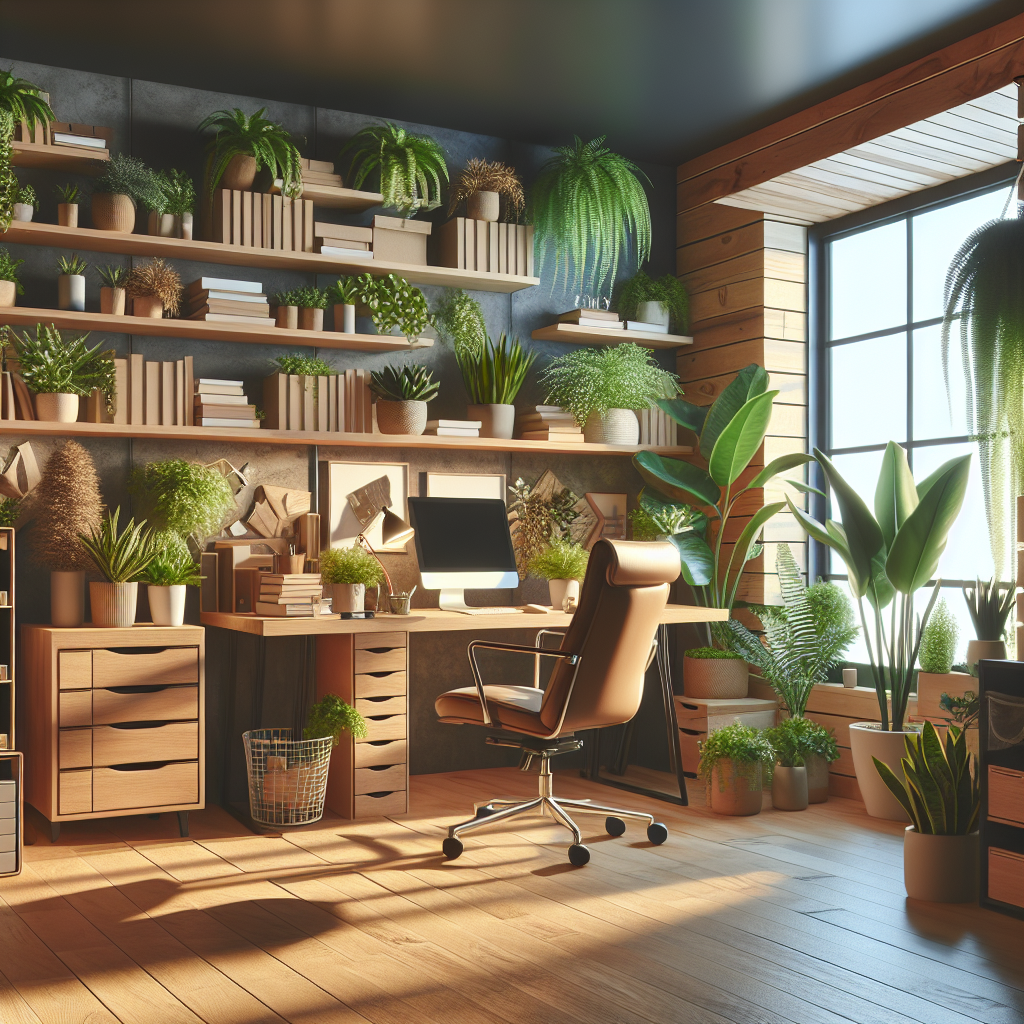
The role of indoor plants in mitigating air pollution
Indoor plants have been shown to play a crucial role in mitigating indoor air pollution. Through a process called phytoremediation, plants are capable of absorbing harmful pollutants from the air, effectively cleansing and purifying it. Not only do they remove airborne toxins, but they also release oxygen, promoting better air quality. Understanding the science behind how air-purifying plants work can help us harness their benefits in our home office spaces.
Science of Air-Purifying Plants
Photosynthesis and air quality
Photosynthesis is the process by which plants convert carbon dioxide into oxygen, utilizing sunlight and chlorophyll. This natural phenomenon significantly impacts air quality, as it helps reduce the levels of carbon dioxide, a greenhouse gas responsible for climate change. By introducing air-purifying plants into our home offices, we can help contribute to a healthier environment by increasing oxygen levels and reducing harmful carbon dioxide.
Transpiration process and humidity balance
Another scientific mechanism that comes into play with air-purifying plants is transpiration. This process involves the plant absorbing water through its roots and releasing water vapor through tiny pores on its leaves, known as stomata. Transpiration helps regulate humidity levels, preventing our home offices from becoming too dry or too damp. By maintaining optimal humidity, indoor plants can create a comfortable and healthier workspace.
Plants’ absorption of toxins
Air-purifying plants have the incredible ability to absorb toxic pollutants from the air, acting as natural air filters. Through their leaves and roots, plants can capture and break down harmful chemicals such as formaldehyde, benzene, and trichloroethylene, which are commonly found in indoor spaces. This absorption process not only improves air quality but also helps eliminate the source of potential health issues caused by these pollutants.
Importance of Air-Purifying Plants in a Home Office
Benefits for mental wellbeing
The presence of air-purifying plants in our home offices goes beyond purely physical benefits. These green companions have also been found to have positive effects on our mental wellbeing. Studies have shown that exposure to nature, even in the form of indoor plants, can reduce stress levels, improve mood, and enhance overall mental wellness. Incorporating air-purifying plants into our workspaces can create a more serene and soothing ambiance, promoting a better state of mind.
Reducing stress and enhancing productivity
Research has consistently shown that exposure to nature, or even natural elements like indoor plants, can have a significant impact on reducing stress levels and enhancing productivity. The presence of greenery in the workplace has been found to improve concentration, memory retention, and attention span. By introducing air-purifying plants into our home office environments, we can create a calmer and more conducive space for focused and efficient work.
Creating a calming atmosphere
The aesthetic aspect of air-purifying plants should not be underestimated. These plants have the ability to transform a dull or sterile home office into a visually appealing and calming space. The soothing presence of greenery can promote a sense of tranquility and relaxation, helping to alleviate anxieties and create a more inviting work environment. The beauty of air-purifying plants lies not only in their tangible benefits but also in the aesthetic enhancement they bring to our home offices.

Review of the Best Air-Purifying Plants for Home Office
Criteria for selection
When choosing the best air-purifying plants for a home office, certain criteria should be considered. It is essential to select plants that are low-maintenance and can thrive in indoor environments with minimal sunlight. Additionally, plants with a high efficiency in removing toxins from the air should be prioritized. The following plants meet these criteria and have been proven to be excellent choices for improving air quality in a home office setting.
Overview of the best plants
- Spider Plant (Chlorophytum comosum)
- Snake Plant (Sansevieria trifasciata)
- English Ivy (Hedera helix)
- Peace Lily (Spathiphyllum)
- Rubber Plant (Ficus elastica)
Detailing on individual plant benefits
Each of these plants offers unique benefits in terms of air-purification capabilities, ease of care, and aesthetics. Understanding the specific advantages of each plant can help us make an informed decision when selecting the best plants for our home office. Let’s delve into the details of each of these air-purifying plants and their suitability for a home office environment.
Spider Plant (Chlorophytum comosum)
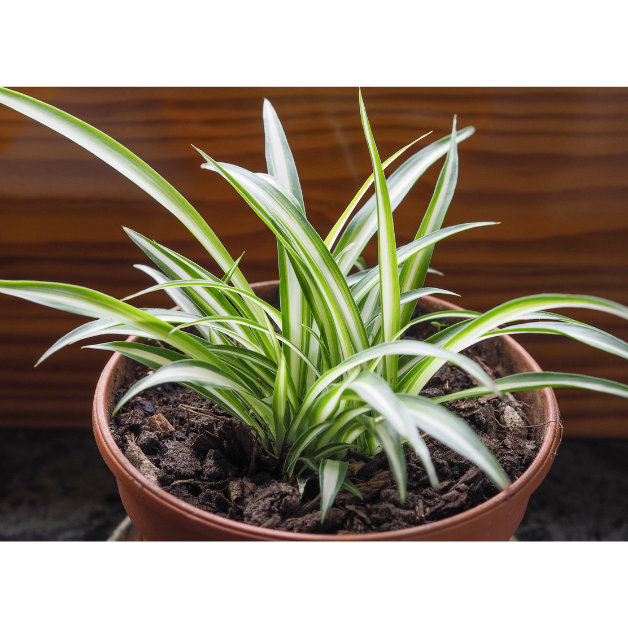
Overview and care instructions
The Spider Plant, also known as Chlorophytum comosum, is a popular choice for indoor gardening due to its low maintenance and air-purifying qualities. This plant features long, arching leaves adorned with white stripes, making it visually appealing for any home office. Spider Plants are known for their ability to tolerate a wide range of light conditions, making them suitable for areas with both natural and artificial light.
Air-purifying qualities
Spider Plants have been found to effectively remove formaldehyde, carbon monoxide, and xylene from the air. These pollutants can be found in various household products, including cleaning solutions, paints, and tobacco smoke. By introducing Spider Plants into a home office environment, we can significantly improve air quality, reducing the potential health risks associated with these toxic substances.
Considerations for a home office environment
Spider Plants are an excellent choice for a home office setting due to their adaptability and easy care requirements. They can thrive in temperatures ranging from 55-80°F, making them well-suited for most indoor environments. Additionally, they are safe for pets and do not pose a threat if accidentally ingested. With their air-purifying qualities and ability to thrive in different lighting conditions, Spider Plants are an ideal choice for any home office.
Snake Plant (Sansevieria trifasciata)
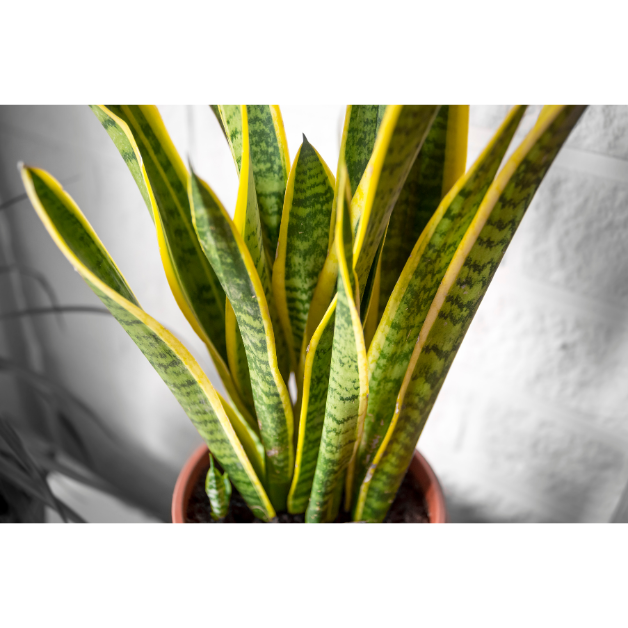
Description and care tips
The Snake Plant, or Sansevieria trifasciata, is a popular choice for both indoor and outdoor environments due to its hardiness and air-purifying capabilities. This plant features long, upright leaves with striking patterns, making it a visually appealing addition to any home office. Snake Plants are well-known for their tolerance of low-light conditions and can thrive even in environments with minimal natural sunlight.
How it improves air quality
The Snake Plant is a powerful air purifier, particularly in its ability to remove formaldehyde, benzene, and trichloroethylene from the air. These toxins can be found in various household products, including furniture, carpets, and paint. By incorporating Snake Plants into a home office, we can effectively reduce the levels of these harmful pollutants, promoting better indoor air quality and a healthier workspace.
Benefits for a home office
The hardiness and low maintenance nature of Snake Plants make them an excellent choice for home offices. They require minimal watering and can tolerate a wide range of temperatures, making them suitable for various indoor environments. Furthermore, Snake Plants release oxygen during the night, making them an ideal addition to bedrooms or home offices where individuals spend a significant amount of time. With their air-purifying qualities and visual appeal, Snake Plants are a valuable asset to any home office.
English Ivy (Hedera helix)

Plant profile and care guide
English Ivy, or Hedera helix, is a versatile and visually appealing plant that can thrive in both indoor and outdoor environments. It features dark green leaves that are easily recognizable and add a touch of elegance to any home office. English Ivy requires moderate sunlight and can tolerate a range of temperature conditions, making it suitable for various indoor settings.
Air-cleaning properties
English Ivy has been shown to effectively remove formaldehyde, benzene, and trichloroethylene from the air. These pollutants can be found in various household products, including carpets, furniture, and adhesives. By introducing English Ivy into a home office environment, we can significantly improve indoor air quality and reduce the health risks associated with these harmful chemicals.
Advantages for a home office setup
The graceful appearance of English Ivy makes it a popular choice for home offices. Its trailing vines can be hung from shelves or placed on desks, adding a touch of natural beauty to the workspace. Additionally, English Ivy has been found to reduce airborne mold levels, making it beneficial for individuals with allergies or respiratory conditions. With its air-cleaning properties and aesthetic appeal, English Ivy is an excellent choice for enhancing air quality in a home office.
Peace Lily (Spathiphyllum)
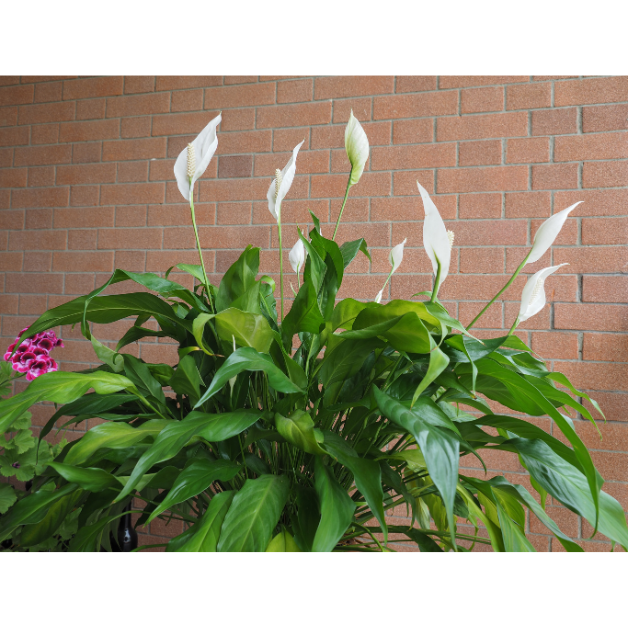
Overview and basic care
The Peace Lily, or Spathiphyllum, is a popular choice for indoor gardening due to its striking white flowers and air-purifying qualities. This plant features deep green leaves and elegant white blooms, making it a visually pleasing addition to any home office. Peace Lilies thrive in low to moderate light conditions, making them suitable for areas with minimal natural sunlight.
Improvement in air quality
Peace Lilies are known for their ability to remove toxins such as formaldehyde, benzene, and trichloroethylene from the air. These pollutants can be found in a variety of household products, including cleaning solutions, carpets, and furniture. By incorporating Peace Lilies into a home office, we can significantly improve indoor air quality, ensuring a healthier and more productive workspace.
Usefulness in a home office
The visual appeal of Peace Lilies makes them a popular choice for home offices. Their elegant white blooms add a touch of beauty and serenity to the workspace, creating a calming and relaxing atmosphere. Additionally, Peace Lilies are known for their ability to increase humidity levels, which can be beneficial in dry indoor environments. With their air-purifying qualities and aesthetic appeal, Peace Lilies are an excellent choice for any home office.
Rubber Plant (Ficus elastica)
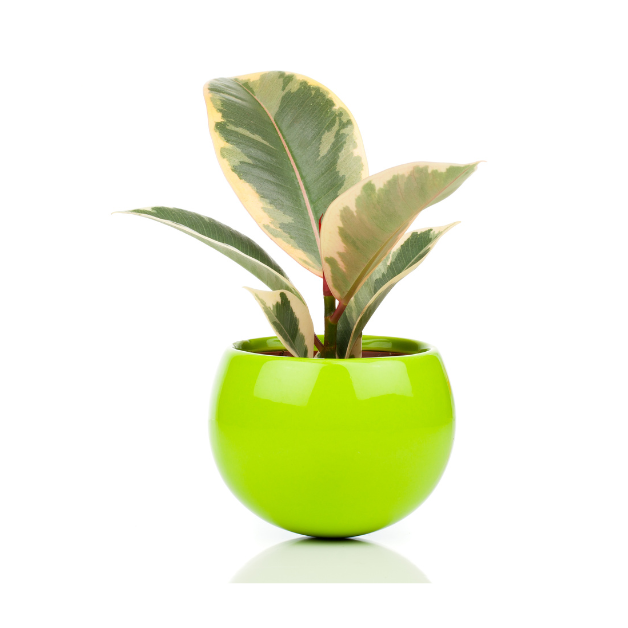
Plant profile and maintenance
The Rubber Plant, or Ficus elastica, is a popular choice for indoor gardening due to its large, glossy leaves and air-purifying capabilities. This plant features thick, dark green leaves and a sturdy, upright growth habit, making it a visually striking addition to any home office. Rubber Plants thrive in bright, indirect light conditions and should be placed near a window where they can receive ample sunlight.
Air-purification capability
Rubber Plants have been found to effectively remove formaldehyde from the air, a common pollutant found in various household products such as carpets, furniture, and adhesives. By introducing Rubber Plants into a home office, we can significantly improve indoor air quality and reduce the potential health risks associated with this toxic chemical.
Merits for a home office environment
The large, bold foliage of Rubber Plants adds a statement to any home office environment. Their visual appeal and sturdy presence create a sense of elegance and sophistication. Additionally, Rubber Plants are known for their resilience and low maintenance requirements, making them suitable for individuals who may not have a green thumb. With their air-purifying capabilities and aesthetic benefits, Rubber Plants are an excellent choice for any home office.
The Future of Air-Purifying Plants
Upcoming research on air-purifying capabilities
As our understanding of indoor air pollution and the benefits of air-purifying plants continues to grow, there is ongoing research to further enhance their capabilities. Scientists are exploring different plant species’ abilities to remove specific pollutants from the air effectively. This research aims to identify and promote the use of the most efficient air-purifying plants, ensuring healthier indoor environments.
Emerging trends in indoor gardening
Indoor gardening has seen a surge in popularity in recent years, driven by a growing interest in sustainable living and well-being. As more individuals realize the benefits of having air-purifying plants in their home offices, there has been an emergence of innovative products and designs to accommodate this trend. From vertical plant walls to modular indoor gardens, there are now numerous options available to create a green and healthy workspace.
Potential for further indoor air quality improvement
With increasing awareness of the importance of indoor air quality, the potential for further improvement through air-purifying plants is vast. As more research is conducted and new plant species are discovered, we can expect a broader range of options for enhancing indoor air quality. This progress holds great promise for the future, ensuring that our home office environments become healthier and more conducive to productivity and well-being.
In conclusion, understanding indoor air pollution and the impact it has on our health is crucial for individuals who spend a significant amount of time working in a home office. Air-purifying plants play a vital role in mitigating indoor air pollution through photosynthesis, transpiration, and their ability to absorb toxins. Incorporating these plants into a home office can have multiple benefits, including improved mental well-being, reduced stress, and enhanced productivity. The Spider Plant, Snake Plant, English Ivy, Peace Lily, and Rubber Plant are among the best air-purifying plants for a home office, each offering unique benefits in terms of air purification, ease of care, and aesthetic appeal. With ongoing research and emerging trends in indoor gardening, the future holds great potential for further improving indoor air quality and creating healthier work environments.






